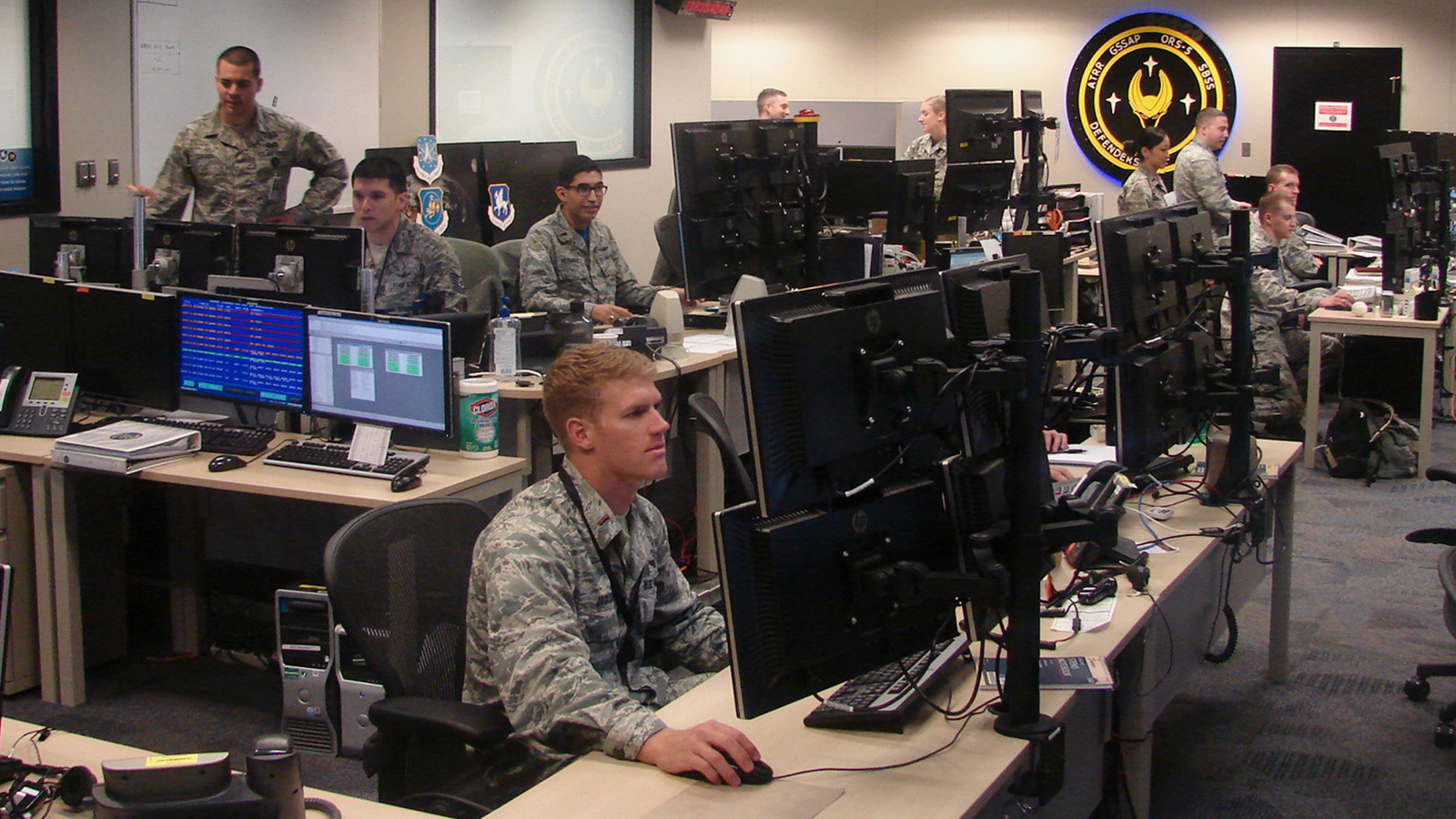Stay Up to Date
Submit your email address to receive the latest industry and Aerospace America news.
American airmen will defend and attack satellites during a computer simulation.
Rival teams of American airmen will compete in the latest U.S. Air Force Space Flag war game in August, a computer simulation aimed at developing new space defense tactics that the Pentagon deems successful enough to expand from two to three games per year in 2019.
Space Flag organizer U.S. Air Force Col. Stuart Pettis told me the exercise lasts several weeks, including academic discussions on strategy and the one-day game and debriefing to review the team tactics. A “blue team” of Air Force service members during the game in August will defend digital versions of satellites on computer screens against an aggressor “red team” of Americans at a rented building off base near his post at Peterson Air Force Base in Colorado. Pettis hosted the first Space Flag in April 2017. The event is still being planned and he would not share complete details about Space Flag scenarios because of national security concerns, but Pettis told me the goal is to create tactics to protect U.S. or allied satellites from being disrupted or destroyed.
“It’s as close as you can get to being in space without breaking actual satellites,” said Pettis, who oversaw training of all U.S. Air Force space personnel while stationed at the Pentagon between 2013 and 2015.
Pettis, who develops tactics and training exercises for U.S. Air Force space personnel, said the games involve low Earth orbit, medium Earth orbit and geosynchronous orbit. Options for competitors to “respond to the threat” in a scenario include maneuvering a satellite, which is easier for aggressors and defenders in the GEO belt that is more sparsely populated with satellites than other orbits. Space debris is not a factor in the simulation because the games are focused on learning how to respond to an adversary.
Air Force Secretary Heather Wilson said in April at the Space Symposium a few kilometers away from Peterson Air Force Base that Russia and China are developing ways to “disable our satellites,” increasing the need for the U.S. and allies to plan how to defend them.
Space Flag has its roots in the Red Flag exercises created in 1975 to develop air combat tactics following the U.S. fighter plane casualties of the Vietnam War. Red Flag exercises have been expanded beyond mock aerial combat to include space and cybersecurity scenarios.
Doing a computer simulation means the U.S. Air Force can keep some tactics in the scenario a secret from adversaries, instead of physical world test methods including building dummy satellites for practice runs in orbit.
“It’s a closed loop environment so nobody’s observing what I’m doing. I’m not burning fuel on a satellite,” Pettis said about the merits of practicing with digital models.
Nations or independent teams of hackers could try to disable satellites, so the training of space professionals should include diverse scenarios, said Doug Loverro who formerly oversaw development of all U.S. Air Force satellites as the executive director of Space and Missile Systems Center.
Loverro said training to defend constellations of satellites should be included in the Space Flag scenarios because “the defense of individual satellites is going to become a risky, untenable proposition.” Not all constellations are designed to compensate for the loss of one satellite, so he advocates for designing satellites that are networked and have redundancy to continue providing data. Disrupting or destroying a satellite from the Space Based Infrared Surveillance constellation, for instance, will create a blind spot in missile warning surveillance.
About Tom Risen
As our staff reporter from 2017-2018, Tom covered breaking news and wrote features. He has reported for U.S. News & World Report, Slate and Atlantic Media.
Related Posts
Stay Up to Date
Submit your email address to receive the latest industry and Aerospace America news.




